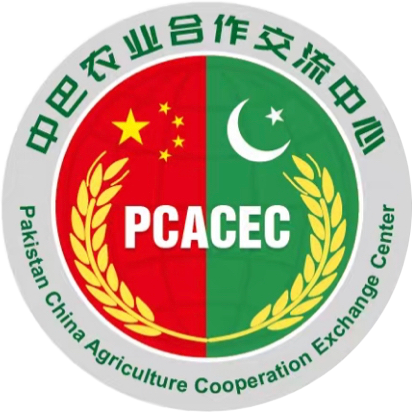Pakistan can & should grow its own tea!
by Tahir Ali

Rustam Khan Advocate (right) with British tea expert at Shinkiari Mansehra in 1980s.
ISLAMABAD, Feb.9th (Gwadar Pro)—With over 1 kg per capita tea consumption per year, Pakistan is one of the top tea-consuming nations in the world. Unfortunately, almost all tea consumed here is imported from abroad, with Pakistan spending billions of rupees annually on tea imports. According to official data, over the past five years, Pakistan spent around USD 513 million annually on tea imports. Pakistan has great potential for tea cultivation but so far the government has been unsuccessful in forming well-thought-out plans to increase tea cultivation in the country. Some farmers started growing tea on their own, but after seeing the government’s lack of interest, they were discouraged to continue their farming.The fact that one enterprising farmer decided to march forward and carry on the belief that Pakistan can grow its own tea and even export it, deserves tributes. Remarkably, his pioneering work proves that Pakistan can cultivate its own tea, which is far more of a significant achievement than the actual “success”.
Rustam Khan Advocate was the country’s first farmer who started cultivating tea plants in northeastern Hazara region of Khyber Pakhtunkhwa (KP). Besides being a professional lawyer and human rights activist, Rustam Khan had a great understanding of farming and led the farming community as Vice President of the Sarhad Chamber of Agriculture. He was able to successfully establish a tea plantation over dozens of acres of the best agricultural land at Baffa Mansehra from 1958 till 1963. The then-Pakistan Tea Board Chittagong (East Pakistan) started experimentation of tea cultivation in Northern Hilly areas of Baffa, Mansehra in the then-West Pakistan. The experiments proved highly successful but after 1964,as a result of a shift in the policy of growing tea in West Pakistan, the experts of the Pakistan Tea Board left for East Pakistan and the tea growing activities had to be continued by Rustam Khan on his own. The poor farmer could only sustain the established tea plantation till 1966 and seeing no support and interest from the public sector, he uprooted most of the tea gardens, leaving a few acres as an indication of the suitability of the land for tea cultivation.
In 1981, General Fazal Haq, the then-Governor of KP, visited the tea plantation of Rustam Khan and not only appreciated the efforts of a small farmer but also informed the President of Pakistan about this great effort. The President invited Rustam Khan to Governor House Peshawar, who apprised the former about the prospects of tea cultivation in Pakistan. Rustam Khan proposed three major interventions at government level: first, get Chinese support for establishment of a tea research station at Shinkiari, which has successfully been done and now Pakistan has its own Tea Research Station at Shinkiari. Second, to involve the tea companies doing business in Pakistan on the lines of tobacco companies to work on promotion of tea plantation and support local farmers, which was also approved by waiving 3% of federal tea import Cess (tax) and companies were asked to use this fund for tea cultivation in Hazara. Uniliver Brothers has established its tea research station and tea factory at Shinkiari using this fund but at a very slow pace since 1986. Third, to provide an interest free loaning facility to the interested tea growers, as tea being a long-term crop requires a huge investment during the initial five years without any return to farmers. The government approved this facility but due to poor strategy, its results were not so good since 1985.
Before the separation of Bangladesh in 1971, all tea consumed in western Pakistan (current Pakistan) came from Chittagong and Sylhet. With the creation of Bangladesh, (fall of Dacca), Pakistan had no choice but to import tea from foreign countries. The country also accelerated efforts to find suitable land for the cultivation of tea. After the failure of some investigatory projects in the Potohar region, Pakistan Agriculture Research Council (PARC) took over the plantation of Rustam Khan in Baffa village of Mansehra. PARC shifted some plants to the Battal area of Mansehra that bore good results. However, despite successful experiment, tea cultivation did not grow on a large scale due to multiple factors at government and farming community level.
The national Tea and High Value Crops Research Institute (NTHRI) set up in 1986 in Shinkiari, has identified 64,000 acres of tea cultivable land in Khyber Pakhtunkhwa and Azad Kashmir. However, currently tea is cultivated on a mere 200 acres of land maintained by NTHRI and Liver Brothers in Shinkiari district of KP. Before the militancy period (2007-09), tea was cultivated over more than 150 acres of land in Swat valley. When the Taliban started using the tea gardens as hideouts, the gardens were destroyed during the military operation.
The NTHRI has 12 varieties/clones of tea and has propagated the variant Rustam-K (Camellia sinensis) acclimatized from the Assamese mother plants imported in 1958 by Rustam Khan who donated cuttings and seeds of this high yielding and superior Black tea variety to the institute.
Currently, the NTHRI and Liver Brothers efforts are the only visible and meager activities but the required commercialization of tea at the farm and factory level could not be achieved.
Some farmers have planted tea at various acreages in Mansehra but they are not optimist about a good turnover, as the market demand for green tea leaf from farmers is very low. No regulatory or management agency is involved in promoting tea plantation by farmers. Thus, the progress so far is very low.
With a struggling economy, Pakistan spends huge foreign exchange on tea imports, so it is high time to bring more areas under tea cultivation and to win the confidence of farmers.


